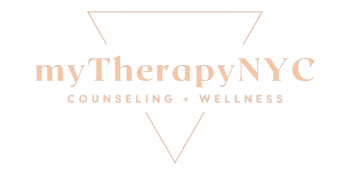Practicing Compassion to Reduce Stress And Build Resilience [Transcript]
Today we’ll be exploring how practicing compassion to reduce stress can help build resilience. I’ll be drawing from a number of sources today, but want to name the researcher clinicians Kristen Neff, Christopher Germer, Ruella Frank, and especially Joe Loizzo, the creator of Compassion Based Resilience Training.
Key Terms
Let’s begin by defining our terms:
Stress is the experience of any event as threatening or overwhelming.
Resilience is the capacity to cope with and bounce back from stress.
Compassion, as defined by the Dalai Lama, is the wish that all beings be free from suffering. This includes self-compassion, or self-kindness, which is the wish for oneself to be free of suffering. Now a very important point. In the contemplative tradition, compassion can be learned and cultivated through practice.
Watch: Bring Self Compassion into Mindfulness
So now we can start putting those terms together in our exploration of how practicing compassion undoes stress and builds resilience.
To do so, we need to start by considering evolution, which has prepared us to process information in two binary modes. One mode is defensive, rooted in survival instincts amidst stress and trauma, including a history of fleeing or fighting predators. One mode is socially engaged, rooted in abundance instincts for healing, cooperation and learning.
Now the catch is that we’re evolved to be far more inclined towards survival instincts. We’ve experienced helplessness as infants. We may have experienced oppression. We’ve likely participated in oppression. In addition to the challenges of our individual histories, we carry evolutionary, socio-cultural, and familial histories of intergenerational stress and trauma. Through this transmission, we are highly evolved to be on guard and hypersensitive to threats. In other words, we have a deeply entrenched negativity bias. That was likely necessary for Homo sapiens survival, and may still serve us at times, but it also has a way of interfering with our happiness and health.
So what to do? It requires intention and a great deal of reinforcement to shift from away from a state of habitual threat, towards a state of safety and connection. This does not mean becoming doormats – as some of my clients like to say. It means managing feelings of threat and reactivity, and being open to finding new, safer states of being in the world.
That’s not easy, but there are very good reasons to do the work. Feelings of safety and connection are associated with almost every positive index of mental health and general well-being. On the flip side, feeling threatened and disconnected is associated with numerous mental and physical illnesses.
I think many of us know this on a visceral level. We know what alone, fearful and threatened feels like. Hopefully we’ve also had some chances to experience what safer and more connected feels like.
So what can we do about all of this? Luckily, human ingenuity has been hard at work. The practices of mindfulness and compassion elicit and build our natural capacity for overriding evolutionary and conditioned stress-reactive responses, in favor of regenerative, creative, cooperative responses.
Read more: The Everyday Benefits of Mindfulness

Take-Away Compassion Practice
I’d like to leave you with a take-away practice. Each day for one week, schedule 3-5 minutes, two times per day for a compassion practice. That’s 3-5 minutes, two times per day, for seven days. And see what you notice.
The foundation of the practice is simply spending those few minutes, a few times each day, offering compassion – in other words, with the wish for yourself and others to be free from suffering. Explore what that means for you. For example, many of us have a tendency to be highly critical of ourselves or others.
This can be a source of great suffering. During your practice you could explore what it feels like to sit for a few minutes being ‘enough,’ knowing that you are trying your best, putting that demand to be more or to be different on hold for just a few minutes. Or regard another person in that same light for a few minutes. Or, another example. You could spend those minutes simply asking that you and others be free from suffering, much like a prayer. Do some experimenting. However, you end up using those minutes, what’s important is your intention. Sometimes it’s literally like flipping a switch.
One more detail. Researcher Stephen Porges has taught us that feeling safer requires more than just an absence of danger. It requires cues of safety. For example, a kind voice, or loving touch. You can try offering these cues to yourself. During your few minutes, you can put your hands on your heart or anywhere else on your body that feels right to you, with the intention of offering kindness and relieving suffering. In your mind, or out loud if you prefer, you can speak to yourself or others with a kind voice.
Upcoming Compassion Based Resilience Training
Finally, in case you’re interested in a deeper dive into this topic, I want to let you know that I’ll be offering exactly that. The course will meet in March, once per week, for 1.5 hours, for six weeks. Each meeting will include both didactic learning and experiential learning. The method is named Compassion Based Resilience Training, or simply CBRT. It is an evidence-based, modular training that has been continually refined over the last 20+ years, and includes a wealth of student resources, including a student manual, guided meditations, research articles, and study aids.
CBRT was created by Joe Loizzo, a Harvard-trained psychiatrist and Columbia-trained Buddhist scholar, who is also a student of the Dalai Lama. Joe’s unique background has allowed him to integrate classical techniques of contemplative self-regulation from India and Tibet with contemporary psychiatric knowledge. I’ve had the privilege of studying with Joe in various contexts over the last decade, so I know this training contains many of the insights he holds most dear. We will be sending out more information all of this if you’re interested.
That’s it for today. Thank you again for joining me.
Are you interested in joining Zachary Model’s Compassion-Based Resilience Training (CBRT) Group? Submit a contact form on the CBRT group’s webpage and someone from our practice will reach out to you shortly.
How do you practice self-compassion and how does it help you? Join the conversation in the comments below!
- What Do Different Types of Anxiety Have in Common? - September 29, 2022
- Understanding Gender Transitions - June 16, 2022
- What is Experiential Psychotherapy? - March 17, 2022




2 comments
I am taken with this entire blog, Zachary. It’s hard to point out a favorite piece. I will say I love how you described the reasons we may have a negativity bias and that human ingenuity has been hard at work figuring out how to address our evolutionary impulses when they aren’t serving us. I’ve participated in your monthly meditation group and benefitted tremendously. What you offer is so soul-nourishing and effective.Thank you for this work.
Thank you for this important post! I just engaged in your self-compassion take-away practice- it is beautiful to give yourself permission to sit with full “enoughness”. It highlights how important it is for us to practice this so that we can go about our day in a safe and connected way rather then on high alert. Practicing self-compassion allows me to feel safe and secure in myself! Thank you for the reminder to practice so we can go about our day feeling safe, secure, and enough!